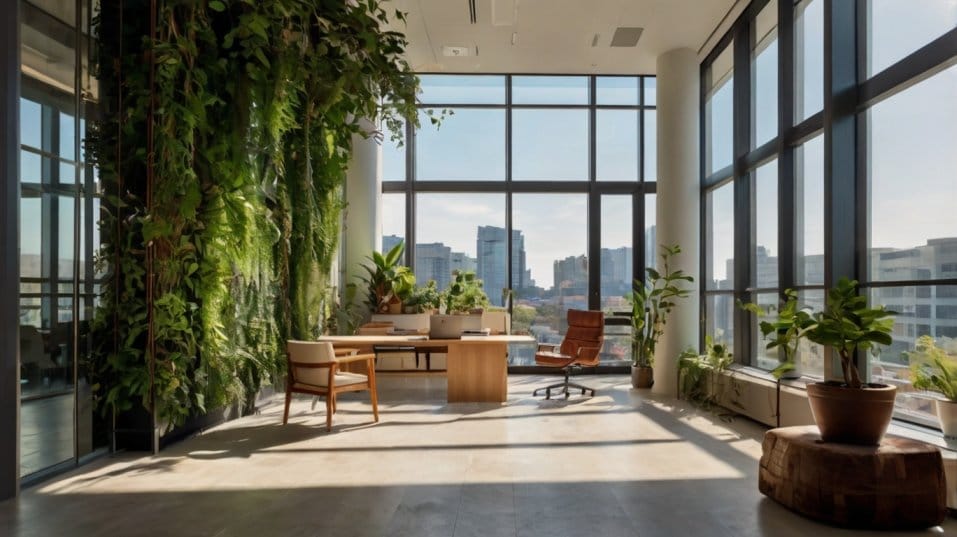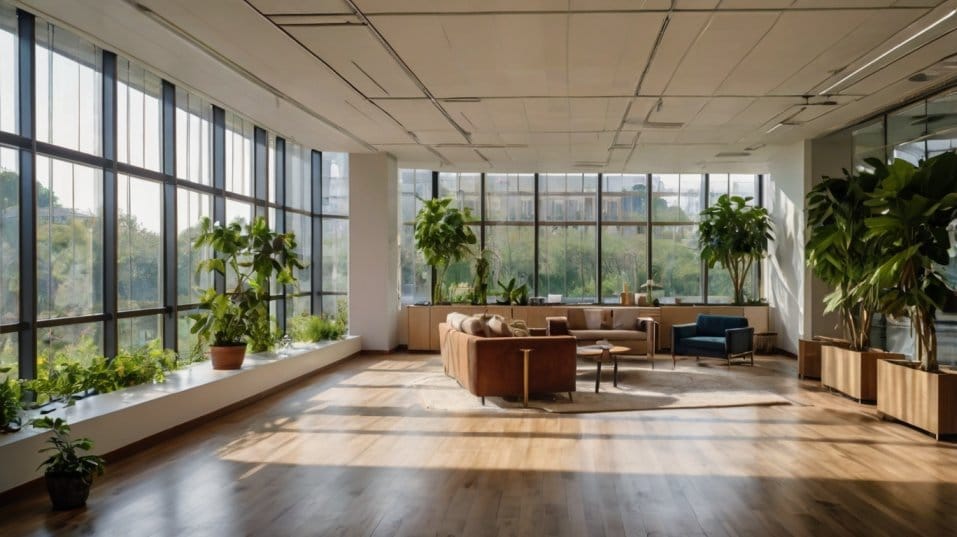How Natural Light and Green Spaces Improve Focus and Creativity
Natural light and green spaces improve focus, boost creativity, and lower stress. Learn simple ways to bring nature into your workspace today.

Ever feel like your office is working against you? Harsh lighting, dull walls, and lifeless surroundings can drain energy and dull creativity.
But what if the key to sharper thinking and better focus wasn’t another cup of coffee, but the space around you?
Research shows that natural light and green spaces don’t just brighten a room—they fuel cognitive function, reduce stress, and enhance creativity.
A few simple changes to your workspace could unlock a more productive, energized, and inspired workday.
The Science of Light and Focus
Your brain thrives on natural light. Sunlight regulates circadian rhythms, keeping you alert and engaged throughout the day.
It triggers serotonin production, which elevates mood and sharpens concentration. When deprived of natural light, the body’s internal clock can become misaligned, leading to sluggishness, irritability, and reduced mental clarity.
Studies confirm that workplaces with ample daylight experience productivity boosts of up to 40%, while employees in artificially lit environments report more headaches, fatigue, and difficulty concentrating.
Light exposure doesn’t just impact productivity—it directly affects sleep quality, reducing the risk of burnout and decision fatigue.

How Natural Light Improves Sleep and Performance
A study from Northwestern University found that individuals exposed to natural light during the workday slept an average of 46 minutes longer per night than those in artificially lit spaces.
Better sleep translates to improved cognitive function, better decision-making, and enhanced creativity.
If your desk is in a dim corner, reposition it near a window if possible. If that’s not an option, use a daylight-mimicking lamp to counteract the effects of artificial lighting.
To maximize exposure, take advantage of natural light throughout the day by stepping outside whenever possible, whether it’s during lunch, a mid-morning stretch, or an afternoon walk.
Why Green Spaces Spark Creativity
A sterile office dulls the mind. Urban environments bombard the brain with constant stimuli—honking cars, digital screens, endless notifications—keeping it in a perpetual state of stress.
Green spaces, on the other hand, act as a mental reset, allowing the brain to switch from reactive mode to creative mode.
The Cognitive Benefits of Green Spaces
Spending time in nature lowers cortisol, the stress hormone, while simultaneously increasing activity in the default mode network—the area of the brain responsible for introspection, problem-solving, and idea generation.
Research has found that exposure to natural environments enhances memory, boosts problem-solving skills by up to 50%, and improves overall mental clarity.
A study published in Environmental Science & Technology showed that just 20 minutes in a park can significantly lower stress levels.
Another report found that employees working in offices with green spaces showed a 15% increase in productivity compared to those in sterile, gray environments.
Bringing Nature Into Your Workspace
Even if you can’t immerse yourself in a forest retreat, small doses of nature can still have a profound effect.
Desk plants, nature-themed artwork, or even digital images of greenery can stimulate the brain’s relaxation response.
Surrounding yourself with elements of nature—wooden furniture, natural fibers, or soft lighting—creates an atmosphere that fosters creativity and focus.
Transforming Your Workspace for Better Thinking
Optimizing your workspace doesn’t require a full redesign. Thoughtful adjustments can turn even the dullest office into a stimulating and productivity-boosting environment:
Maximize Daylight
Open blinds, adjust your seating to be closer to a window, or use full-spectrum bulbs that mimic natural sunlight.
Incorporate Greenery
Adding plants like snake plants, pothos, or peace lilies not only enhances aesthetics but also improves air quality, reducing toxins and boosting oxygen levels.
Step Outside Frequently
A short five-minute walk in a green space has been shown to reset cognitive function, lower stress, and enhance problem-solving skills.
Use Nature-Inspired Elements
Wooden desks, landscape paintings, and soft, natural textures can subtly enhance creative thinking by mimicking the tranquility of nature.
Leverage Natural Movement
Instead of staying seated for hours in one place, integrate movement by repositioning yourself near different light sources throughout the day. This can prevent fatigue and maintain alertness.
Create a Sensory Connection to Nature
Incorporate elements like essential oils with scents of pine, lavender, or citrus to trigger a calm, focused state. Listening to nature sounds—waves, birds, or rustling leaves—can also help maintain concentration and creativity.
Make Outdoor Meetings a Habit
If possible, hold brainstorming sessions or one-on-one meetings in a park or garden. Fresh air and natural surroundings encourage open thinking and engagement.
Designate a Green Retreat in Your Office
A small corner with comfortable seating, plants, and natural lighting can serve as a reset space where employees can recharge and return to work with renewed focus.
Final Thoughts
Your surroundings shape your mind. Dim, lifeless spaces sap energy, while natural light and greenery fuel sharper thinking, lower stress, and inspire fresh ideas.
The benefits extend beyond work—better sleep, lower anxiety, and improved well-being all come from small environmental adjustments.
Start today. Move closer to a window, bring a plant into your space, step outside between meetings, or introduce natural elements to your office setup. These simple changes don’t just enhance productivity—they improve your quality of life.




